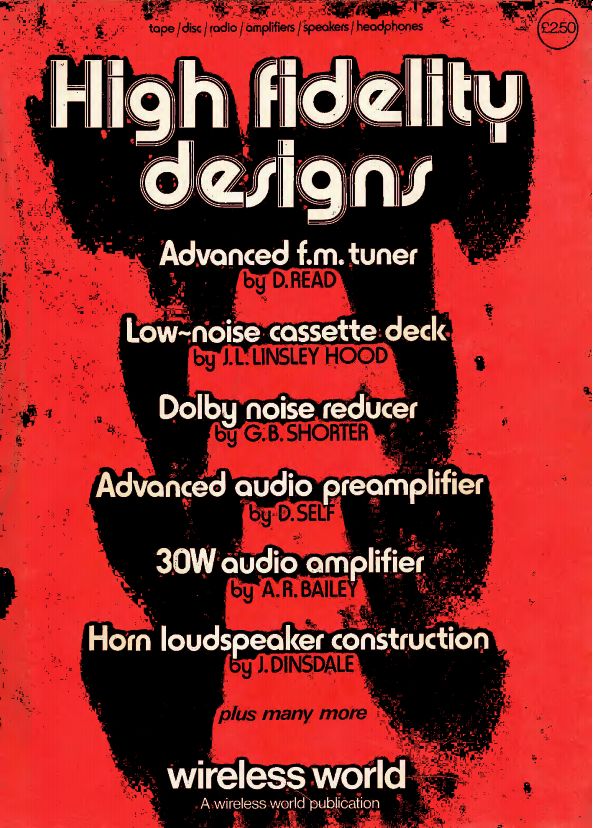CONTENTS
- FM tuner design
- Novel stereo FM tuner
- Low-noise, low-cost cassette deck
- Dolby noise reducer
- Wideband compander design
- High-quality compressor/limiter
- An automatic noise-limiter
- Modular integrated circuit audio mixer
- The "walltenna"
- Electronic piano design
- Advanced preamplifier design
- High quality tone control
- Multi-channel tone control
- Bailey-Burrows preamplifier
- 30-watt high fidelity amplifier; amplifier modification
- Baxandall tone control revisited
- Active crossover networks
- Electrostatic headphone amplifier
- Class A power amplifier
- An I.C. peak program meter
- Horn loudspeaker and design
- The transmission-line loudspeaker enclosure
- Commercial quadraphonic systems

High Fidelity Designs is a collection of the most popular audio constructional articles published in Wireless World magazine during the last few years (1970-77). It covers the whole range of equipment, from signal sources to speakers and headphones, and from it can be selected a system suitable for most requirements.
Introduction
THE success of the first collection of articles clearly demonstrated that there is a need for the preservation of out-of-print information on constructing high-quality sound reproduction equipment. In this second book, we have up-dated most of the content, but have left in some of the more popular articles which are still in demand.
The inclusion of John Linsley Hood's cassette deck design prompted the succession of noise-reduction and range-expanding units, while the Walltenna was too appealing an idea to leave out. Geoff Cowie's piano is not, perhaps, strictly an audio project in the ordinary sense, but many people seem to want photocopies, so that we reproduce it here in rather better shape than the average copy.
Arthur Bailey's 30-W amplifier is still very much in demand and this is retained, but David Read's active crossover system is an addition. This has been very well received and appears to have started a series of copies -- always a sign of quality. The transmission-line speaker is the second version, and Jack Dinsdale's horn speakers are included.
The flow of designs submitted for publication shows no sign of drying up, so that even the equipment in this collection of reprints will eventually be overtaken by improved techniques. To keep up with progress, there is no better source of information than Wireless World which, over 64 years, has built up a reputation for being first with new techniques, many of which are now industry standards.
Note: Prices given £ or $ is based on 1977 price.